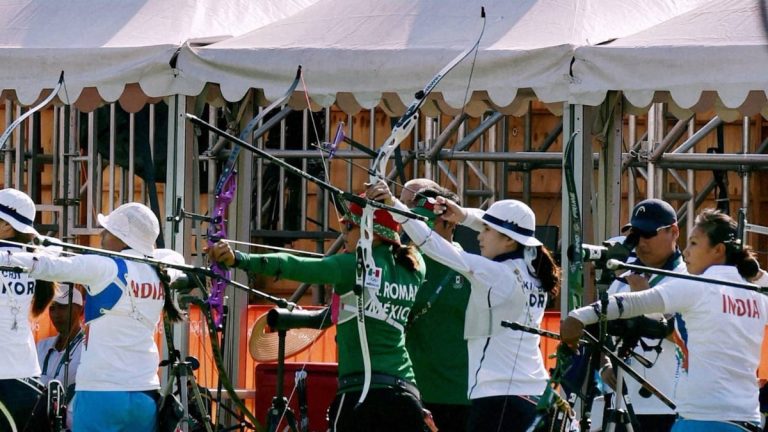Why did the Indian national archery champion finish fourth in the competition but fail to advance in major sporting events? Indian Institute of Technology (IIT) Madras has been working with the federal government to analyze, provide insights and develop technologies such as body sensors and computer vision for the upcoming Olympics and eventually the 2036 Summer Games.
The Center of Excellence in Sports Science and Analytics (CESSA) at IIT Madras has been working on a project to create digital analytics for archers, which can help them and their coaches study performance in detail, identify gaps and improve upon them.
CESSA has been working closely with the Sports Authority of India (SAI) to develop technology across various sports to help improve athlete performance with an eye on the 2036 Summer Olympics, while continuing to use it for various competitions and championships in the interim.
Even though Indian archers created history in the mixed team bronze medal event at the 2024 Paris Olympics this year, they could not go alone.
The institute conducted a study on the performance of a total of 31 archery athletes who represented India at the World Championships and Asian Games and trained at SAI's Sonepat facility and submitted the findings to the sports authorities recently.
Professor Nandan Sudarsanam from the Department of Data Science and Artificial Intelligence said archery is one of the priority sports that has the potential to make an impact. “So what we did was basically understand the relationship between the timing parameters of the game and performance by analyzing the data collected from the Sonepat facility. When we visited SAI, Sonepat’s coach commented that the shooters Poor form and too much time spent shooting between phases made us really think about whether there was an actual relationship between the time spent in each phase and the performance of the archers,” he said.
There are several stages in archery – preparation, draw, extension, release and follow-up. Studies have found that, especially during the unfolding phase when archers have their bows fully drawn and ready to shoot, they set a limit they want to reach and then look at the target for 5-10 seconds, which is how long they need. However, another thing that happens is that the muscles start to fatigue – meaning there are two opposing forces.
“So, to study whether taking more time works for some people, or not for others, we set up cameras to study 31 archers and took nearly 100 shots of each. Through this, we were able to vary the parameters between and establish some relationship with performance,” Professor Sudarsanam said.
When looking at the summary profile, expansion time was found to be the most important in terms of both duration and variability, highlighting it as a critical phase that may benefit from focus training and consistency improvements.
Additionally, studies have found significant differences in establishment and expansion times between the sexes. Variables also vary greatly between compound and recurve bow types.
“One particularly powerful finding we made was that female archers in compound bows showed that there's a sweet spot of about six and a half to seven seconds during the deployment phase, and that there's a time that's either too short or too much above that. is a question. So when these insights are provided to archers, it can help them tailor their responses to indicate that this is the ideal time,” he said.
At the end of this exercise, we found that the data still showed mixed results, he added. Some patterns can be seen, but they are not statistically significant. “We were able to see some patterns, but not as many as we would have liked to see, and they were not statistically significant,” he said.
“So we decided not to feed the insights back to them, but to create an archery analytics system, and that was our plan, and SAI embraced it with great enthusiasm and created it as an analytics product which captures for every archer data, because two different archers can behave in very different ways, which is why we may not see global trends. It's almost like giving each individual individual feedback to improve their performance,” Prof. explain.
Sports like archery and shooting are great for data analysis – there’s action and a clear score at the end. Unlike other sports, which allow people to modularize the sport, sports like football, basketball, or hockey have a lot of interacting dynamics because these sports pit groups against individuals.
Now that the results are in, the institute is working to build an analysis system using a sensor-based approach. “It's still in the early stages. We're exploring the use of video and vision as well as body sensors. Archers and their trainers can access the system directly, the archer goes in there, puts on some body sensors, shoots some arrows, and Come back immediately on their phone or computer to see how their performance changes as a function of the time spent in each stage.
